– Brief overview of the topic
Using cleaning products such as Air Fresheners can pose potential health risks to employees due to the chemicals contained within them. Some of these risks include skin irritation, respiratory issues, allergic reactions, and long-term health effects from exposure to toxic chemicals. To protect employees from these risks, it is important to provide proper training on handling and using cleaning products, as well as ensuring the availability of personal protective equipment such as gloves, masks, and goggles. Additionally, using environmentally friendly and non-toxic cleaning products can help minimize health risks. Some chemicals when mixed together can be produce some pretty horrible toxic effects, we don’t want to unleash those monsters!
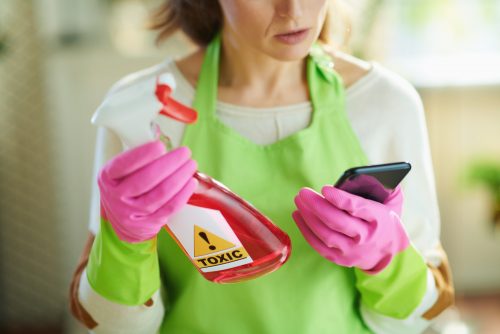
Checking to see why house cleaners are toxic online!
Cleaning products should be stored in a designated area that is well-ventilated, secure, and away from food and other chemicals. It is important to follow the manufacturer’s instructions for storage and to properly label all cleaning products. Furthermore, storing cleaning products in their original containers and keeping them tightly sealed can help prevent accidental exposure and spills. Regularly conducting risk assessments and providing clear communication about the potential health risks associated with cleaning products is essential for maintaining a safe and healthy work environment.
– Importance of understanding the toxicity of household cleaners
It is crucial to understand the toxicity of household cleaners as they pose significant risks to our health and the environment. By being aware of the potential hazards of these products, we can make informed decisions to protect ourselves and our loved ones. Additionally, understanding the toxicity of household cleaners can help us use these products responsibly and prevent accidental poisonings. We must also be mindful of the impact these chemicals have on the environment when they are disposed of improperly. By educating ourselves about the potential dangers of household cleaners, we can take proactive steps to minimize their harmful effects.
So why are house cleaners toxic?
Common harmful chemicals found in household cleaners include chlorine bleach, ammonia, glycol ethers, formaldehyde, and fragrances.
Chlorine bleach is a powerful disinfectant and whitening agent that can cause respiratory issues and skin irritation if not properly diluted and handled. Ammonia is a common ingredient in glass and surface cleaners but can be harmful if inhaled, causing irritation to the respiratory system and eyes. Glycol ethers are often found in spot removers and carpet cleaners and have been linked to reproductive issues and developmental problems.
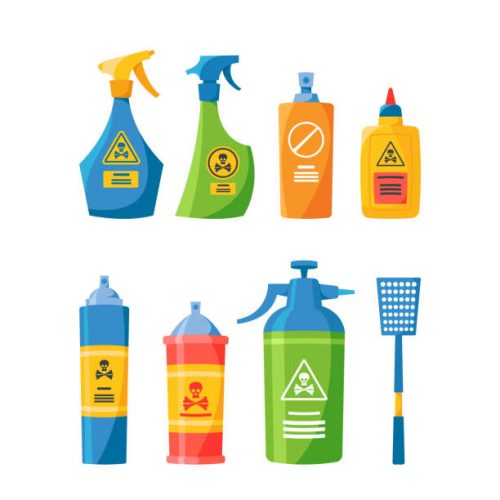
A set of Toxic house cleaners
Formaldehyde is a preservative often found in cleaning products can cause respiratory issues and has been classified as a carcinogen. Fragrances, while not a specific chemical, can contain a mixture of chemicals that can lead to allergic reactions and respiratory irritation.
When using household cleaners, it is important to follow safety guidelines, ensure proper ventilation, and consider using safer, eco-friendly alternatives to minimize exposure to harmful chemicals.
– Sodium hydroxide
Sodium hydroxide, also known as lye or caustic soda, is a strong alkaline chemical commonly used in cleaning products. When handling sodium hydroxide, it is crucial to prioritize safety. Wear protective gloves, goggles, and a mask to prevent skin and eye irritation or respiratory issues. Keep sodium hydroxide away from acids, as it can produce hazardous gases when combined.
Exposure to sodium hydroxide can cause severe burns, irritation, and permanent damage to the skin, eyes, and respiratory system. Ingestion or inhalation of sodium hydroxide can be life-threatening.

Sodium Hydroxide = Caustic Soda
To minimize the health risks associated with sodium hydroxide, consider using alternative cleaners such as baking soda, vinegar, or citric acid. These options are safer for both the user and the environment. They are effective in removing stains, unclogging drains, and disinfecting surfaces without the harshness of sodium hydroxide.
When working with sodium hydroxide, always handle it with extreme caution and follow safety protocols. Be aware of the potential health risks and consider using alternative, healthier cleaning options whenever possible.
– Sodium hypochlorite
Sodium hypochlorite is a common ingredient in household cleaning products such as bleach and disinfectants. While it is an effective disinfectant, it does come with potential health risks. Exposure to sodium hypochlorite can irritate the skin, eyes, and respiratory system. Prolonged or high levels of exposure can lead to more serious health issues such as asthma and other respiratory conditions.
Healthier alternatives for cleaning and disinfecting without using sodium hypochlorite include hydrogen peroxide-based cleaners, vinegar, and citric acid-based products. These alternatives are just as effective at disinfecting surfaces without the potential health risks associated with sodium hypochlorite.
To reduce exposure to sodium hypochlorite in everyday cleaning products, it is important to use these products in well-ventilated areas and to wear gloves and protective eyewear when handling them. It’s also important to carefully read and follow the instructions on the product labels to ensure safe use.
In conclusion, while sodium hypochlorite is effective in cleaning and disinfecting, it does come with potential health risks. Using healthier alternatives and practicing safe handling of cleaning products can help reduce exposure to sodium hypochlorite in the household.
– Phthalates
Phthalates are a group of chemicals commonly used in a variety of products, including plastics, personal care products, and household items. However, exposure to phthalates has been associated with a range of health risks, particularly to reproductive health. Studies have linked phthalate exposure to decreased fertility, abnormalities in male reproductive system development, and disruptions in hormone function.
To reduce exposure to phthalates, it’s important to choose fragrance-free or all-natural organic products whenever possible. This includes items like cleaning supplies, personal care products, and air fresheners. Opting for essential oils or natural plants to freshen the air is also a healthier choice, as synthetic fragrances often contain phthalates.
Additionally, it’s crucial to be mindful of the sources of exposure to phthalates. They can be found in everyday items like plastic food containers, children’s toys, vinyl flooring, and even some medical devices. By choosing phthalate-free alternatives or reducing the use of these products, it’s possible to lower overall exposure.
Overall, being mindful of the products we use and opting for natural, fragrance-free options can help reduce exposure to phthalates and protect reproductive health.
– Ammonia
Ammonia is commonly found in household cleaning products but can pose serious health risks. When inhaled, ammonia can cause irritation to the respiratory system, leading to coughing, chest tightness, and difficulty breathing. Prolonged exposure can exacerbate asthma symptoms and may even lead to chronic respiratory issues.
One of the most hazardous risks of using ammonia is its potential to create toxic fumes when mixed with bleach. This combination can produce a dangerous chemical reaction, releasing chlorine gas which can cause coughing, chest pain, and difficulty breathing. In severe cases, it can even lead to lung damage or respiratory failure.
To avoid these health risks, consider using alternative, healthier cleaning options such as vodka or toothpaste. Vodka’s high alcohol content makes it an effective disinfectant, while toothpaste can be used to scrub and clean various surfaces.
It’s crucial to steer clear of cleaning products containing bleach and ammonia. Instead, opt for natural and safe homemade remedies using ingredients like vinegar, baking soda, and essential oils. These alternatives are effective for cleaning and disinfecting while minimizing health risks associated with harsh chemicals. By making informed choices and using safer alternatives, you can protect both your health and the environment.
– Triclosan
Triclosan is a widely used antimicrobial chemical that can be found in a variety of consumer products, such as soaps, toothpaste, and hand sanitizers. Despite its common use, triclosan has been the subject of controversy due to concerns about its potential negative impact on human health and the environment. This chemical has been linked to hormone disruption, antibiotic resistance, and harmful effects on aquatic ecosystems. As a result, there has been increasing scrutiny and regulations placed on the use of triclosan in various products. Understanding the potential risks and implications of triclosan is crucial in making informed decisions about its use and in implementing appropriate measures to limit its potential harm.
Health hazards associated with toxic cleaning products
Toxic cleaning products present various health hazards that can negatively impact our well-being. These hazards include skin and eye irritation, breathing difficulties, and an increased risk of cancer. Exposure to the harsh chemicals in these products can lead to respiratory problems such as asthma and exacerbate existing lung conditions. The fumes released from these products can irritate the airways, causing difficulty in breathing and triggering asthma attacks. Prolonged exposure can also lead to chronic respiratory issues and long-term damage to the lungs. In addition to respiratory problems, these chemicals can also cause skin and eye irritation upon contact, resulting in discomfort and potential long-term damage. Furthermore, continuous exposure to the harmful substances in toxic cleaning products has been linked to an elevated risk of cancer, particularly in individuals who have frequent and prolonged contact with these chemicals. It is crucial to be aware of these health hazards and consider using safer, non-toxic alternatives to protect our health and well-being.
– Skin irritation and allergic reactions
Top chemicals known to cause skin irritation and allergic reactions include sodium lauryl sulfate, formaldehyde, and parabens. Fragrances such as limonene and linalool can also trigger reactions, while enzymes like protease and amylase can cause sensitivity in some individuals.
Exposure to these substances can result in symptoms such as redness, itching, swelling, and hives. Prolonged or repeated exposure may lead to more severe effects such as eczema, contact dermatitis, or respiratory issues for those with asthma or other sensitivities.
To minimize the risk of skin irritation and allergic reactions, it’s important to read product labels carefully and choose items that are labeled as “hypoallergenic” or “fragrance-free.” When using cleaning supplies, wearing gloves can provide a barrier between the skin and potential irritants. For personal care products, conducting patch tests on a small area of skin before full use can help identify any potential reactions. Additionally, opting for products with fewer and safer ingredients can reduce the likelihood of experiencing skin irritation and allergic symptoms.
– Eye irritation and damage
Cleaning products often contain harsh chemicals that can cause eye irritation and damage. Chemicals such as ammonia, bleach, and disinfectants can lead to immediate irritation, redness, and discomfort if they come into contact with the eyes. Prolonged exposure to these chemicals can lead to more serious conditions such as chemical burns, corneal damage, and even vision impairment.
It is essential to use protective eyewear, such as goggles or safety glasses when using these cleaning products to prevent accidental splashes or fumes from coming into contact with the eyes. Additionally, proper ventilation in the cleaning area is crucial to minimize the risk of eye irritation from chemical fumes.
To reduce the potential harm to the eyes, consider using alternative, natural cleaning solutions such as vinegar, baking soda, or lemon juice. These options are less harmful to the eyes and can effectively clean and disinfect various surfaces. Natural cleaning solutions not only help protect the eyes but also contribute to a safer environment for everyone in the household.
– Respiratory issues and asthma attacks
Respiratory issues and asthma attacks can be triggered by various factors, including Asthmagens and common cleaning supplies. Asthmagens are substances that can cause or worsen asthma symptoms, such as dust mites, mold, pollen, pet dander, and certain chemicals found in cleaning products. Exposure to chemicals like quats, ethanolamines, bleach, and ammonia can also have adverse respiratory effects, leading to symptoms such as coughing, wheezing, shortness of breath, and chest tightness.
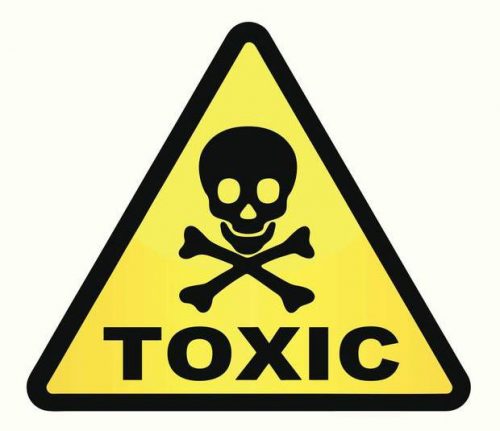
The most common symptoms and warning signs of an asthma attack include coughing, wheezing, shortness of breath, and chest tightness. In the workplace and at home, it is crucial to avoid exposure to respiratory irritants by using ventilation systems, wearing protective equipment, and choosing low-irritant cleaning supplies. Regular cleaning and dusting to control allergens, and using fragrance-free, non-toxic products, can help reduce the risk of respiratory issues.
In summary, being aware of triggers such as asthmagens and harmful chemicals, and recognizing the symptoms and warning signs of respiratory issues and asthma attacks, are essential in managing and preventing these conditions. Taking steps to avoid exposure to respiratory irritants in the environment can significantly improve respiratory health.
– Kidney damage
Kidney damage can be caused by a variety of factors, including chronic conditions like diabetes and high blood pressure, as well as acute injuries or infections. The kidneys play a crucial role in filtering waste and excess fluids from the blood, so any damage to these vital organs can have serious consequences for overall health. In this section, we will explore the symptoms, causes, and potential treatments for kidney damage, as well as the importance of early detection and prevention strategies. Understanding the risk factors and potential signs of kidney damage is essential for maintaining optimal kidney health and preventing long-term complications.
Environmental impact of toxic cleaning products
Toxic cleaning products have a significant impact on the environment, particularly on aquatic ecosystems, waterways, and wildlife. Ingredients such as triclosan, 1,4-dioxane, nonylphenol ethoxylates, and phosphates are especially harmful. Triclosan, for example, can disrupt hormone regulation in aquatic organisms, leading to reproductive and developmental effects. 1,4-dioxane, a known carcinogen, can contaminate waterways and persist in the environment for a long time. Nonylphenol ethoxylates are toxic to aquatic life and can also disrupt hormonal balance. Phosphates, commonly found in many cleaning products, contribute to the growth of harmful algae in waterways, depleting oxygen levels and harming aquatic wildlife.
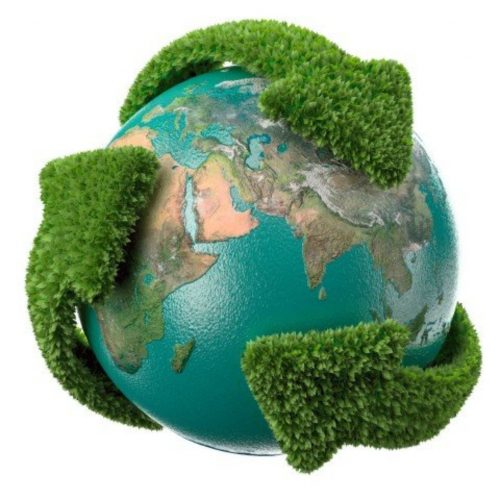
These chemicals not only directly harm aquatic life but also have the potential to bioaccumulate in the food chain, leading to widespread impacts on wildlife and ultimately on human health. As these toxic ingredients make their way into the environment through water systems, their persistence and ability to cause harm to aquatic ecosystems and wildlife are concerning. Individuals and businesses need to be conscious of the environmental impact of the cleaning products they use and consider more eco-friendly alternatives to minimize harm to the environment.

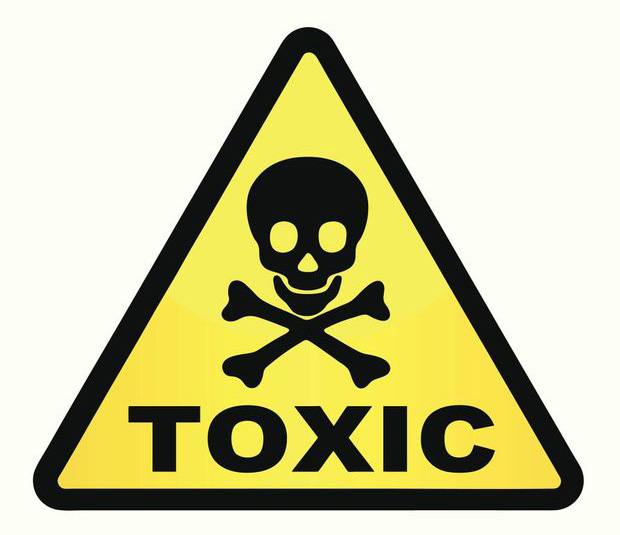

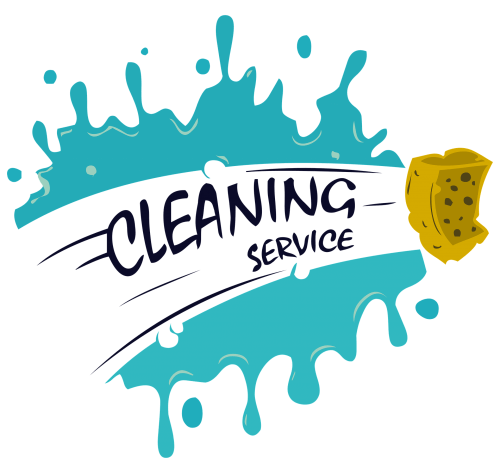
0 Comments